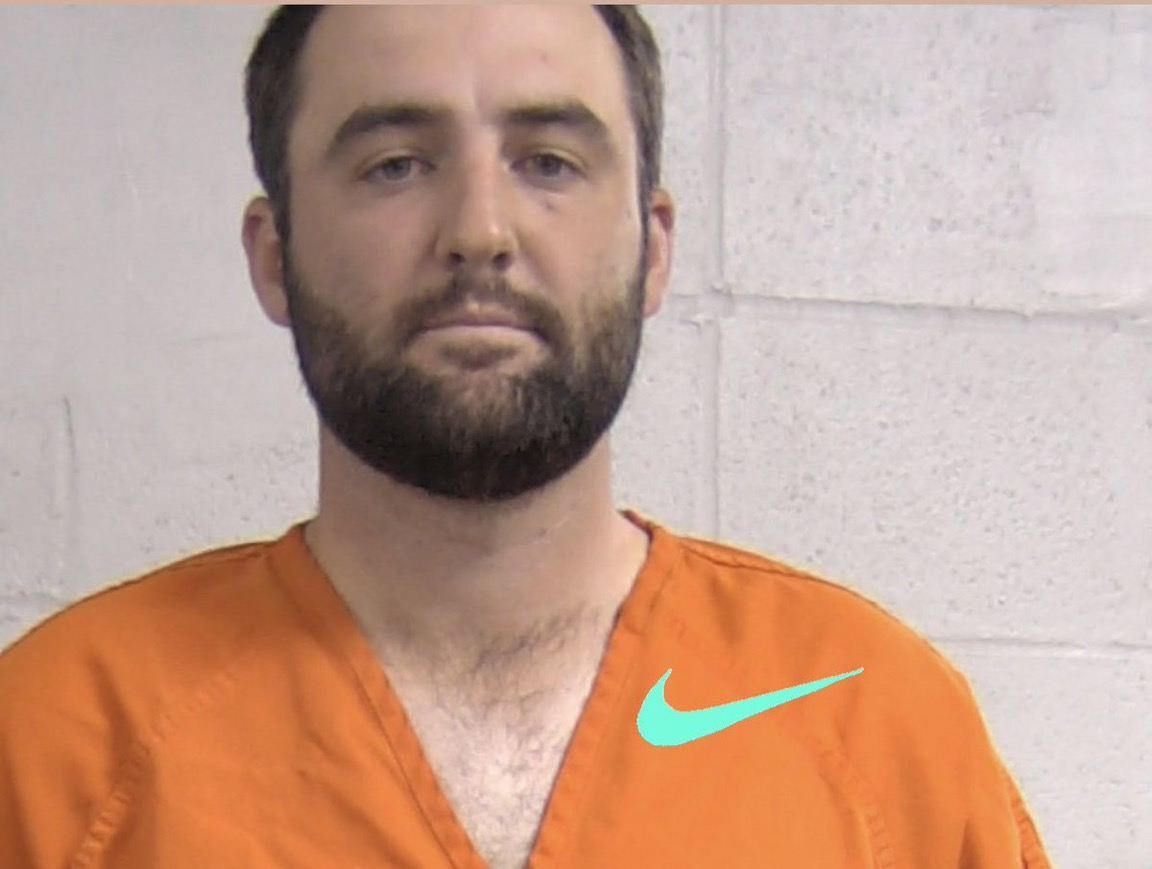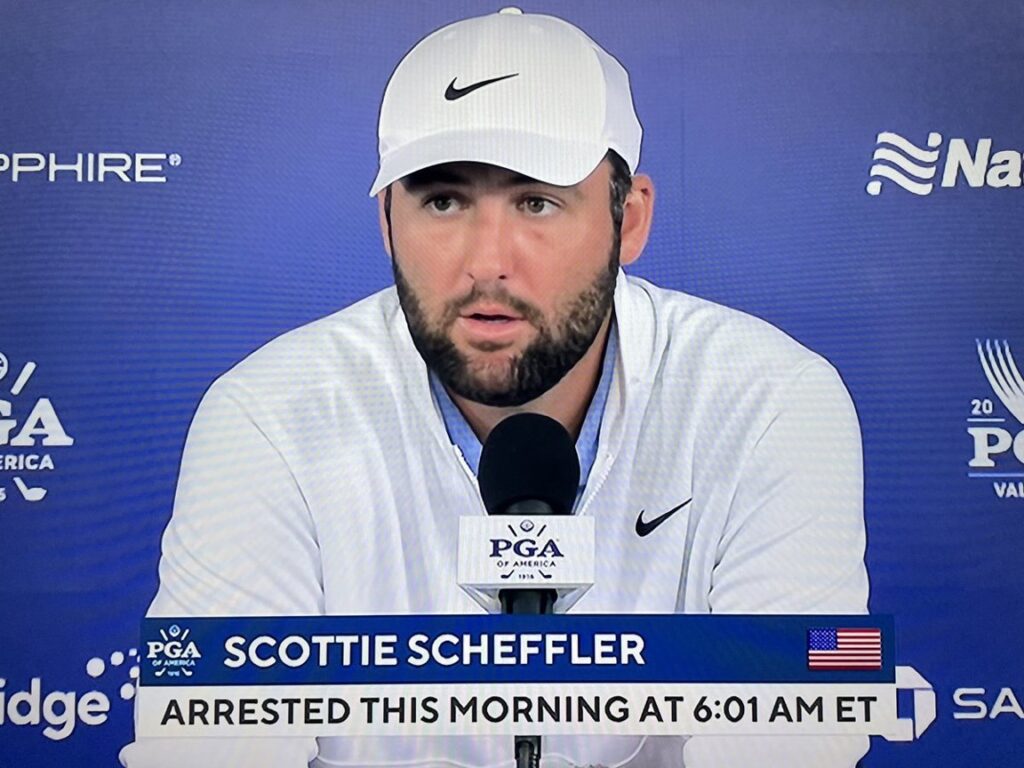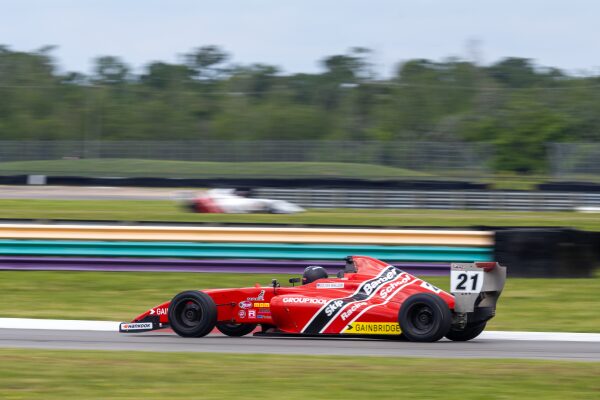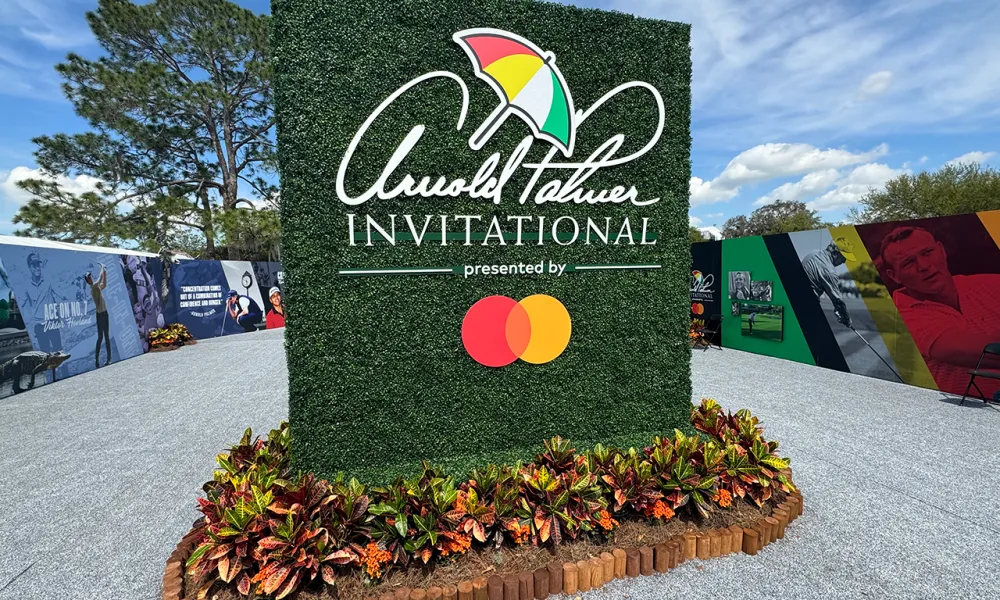News
Scheffler’s Arrest – A Picture Says a Thousand Words

Nobody had “#1 Ranked Golfer in the World, Scottie Scheffler Arrested as He Attempted to Drive into the Parking Lot at Valhalla Friday Morning” on their 2024 PGA Championship bingo card. It’s now seven days later and we have been provided with two videos of the incident and learned some details of the facts that led to this remarkable event. Based upon our review of videos, statements made by witnesses, statements made by the Mayor of Louisville and information obtained from a source within the Louisville Metro Police Department, the following is a summary of what we know so far.
At approximately 5:00 AM retiree John Mills, a volunteer working security for the event, was tragically struck and killed near “Entrance One” to the property by a shuttle bus. As a result of the investigation into this fatal accident, traffic was bottlenecked leading to the course and round 2 tee times had already been delayed by the PGA of America.
Police officers already assigned to the event had set up a check point approximately one mile from the parking lot entrance. They instructed those with certain credentials (competitors, caddies, tournament officials and media members) on the procedure to enter the grounds. Multiple competitors and media members confirmed this and stated that following these instructions they were able to and did in fact enter the parking lot that Scheffler was attempting to access. The dash cam footage provided at noon today confirms these facts. Countless cars and a few buses travelled “the wrong” way and successfully made the left hand from the “improper lane” to turn into the property.

Sources inside the Louisville Police Department had previously informed us that the officers assigned to the Championship are golfers and fans and were specifically selected to work the event. They also stated Detective Gillis is a member of the Highway Division and was at the scene solely due to the earlier fatality.
Pursuant to Louisville PD regulations, officers involved in police activities are required to wear an active body camera. Many had surmised that this footage would provide the evidence necessary to resolve precisely what occurred Friday morning. We now know that Detective Gillis DID NOT have the required body camera running during the interaction with Scheffler.
“The officer did not have bodycam footage turned on during the incident. We will release the footage that we have” stated Louisville Mayor Craig Greenberg. Sources have indicated that Gillis, with 13 prior reprimands on his record, has been “given time off” following the incident. Mayor Greenberg, at a press conference today, both released PD findings that Detective Gillis failed to comply with applicable regulations and that he had been disciplined for this failure.
Following the conference, the Louisville Metro PD release on its YouTube channel two video of the incident. One is from a pole located across the road from the entrance and the other is of a police dash cam from a vehicle facing the entrance. While acknowledging that other videos exist, Mayor Greenberg stated that those videos would not be released until subsequent to the conclusion of legal proceedings at the request of the prosecutor’s office.
The Pole Camera

Situated on a pole across from the entrance to Valhalla, the brief footage shows stopped traffic and the general scene. The video provided begins shortly prior to the incident and ends with Scheffler’s arrest.
Primarily blocked by a bus, it is impossible to see the initial interaction (if any) between the parties. When Scheffler’s vehicle comes into view, its travelling slowly and makes a left turn into the entrance. What we surmise is the officer in question is seen jogging behind and to the left of the car and we see him take a 45 degree angle to reach the side of the vehicle where he proceeds to strike the driver’s side window with a flashlight. Upon the window being struck, Scheffler immediately stops. There is an exchange and it appears the officer reaches into the window. The door is opened and Scheffler is pulled out and throw against the car.
Dash Cam Footage

The provided footage from the dashcam is significantly longer than the pole cam. It also clearly demonstrates the conditions that existed leading up to and at the time of the incident. The area in front of the entrance is controlled chaos. Police vehicles everywhere and zero traffic moving. With one exception. For the better part of an hour preceding the incident, cars and buses are moving in the “wrong” lane and making left hand turns into the entrance. (Which as discussed above, they were told to do by the officers manning the checkpoint a mile from the entrance).
Immediately prior to Scottie arriving at the scene, a bus makes half a left turn into the entrance and stops. We can see that a number of persons (presumed to be officers and/or private security) approach the driver’s side window. After a few moments they walk away and we see the bus driver exit the bus. Moments later (after the persons who had been standing in the road next to the bus move out of the way) we see Scheffler begin to slowly move forward to make the left turn. Neither video shows the officer violently precipitated to the ground causing the injuries claimed or the catastrophic $80 worth of damage to his pants.
What Happens Next?
Scheffler’s arraignment, previously scheduled for this week, was adjourned to June 3rd over the objection of the prosecuting attorney. Both sides have issued statements that there will be no plea bargain reached. Either the case will be dismissed or we will get to see the golf “trial of the century” in the coming months. In the meantime, Scheffler teed it up this afternoon in the Charles Schwab Challenge at Colonial in Fort Worth.

Check back often to stay informed on everything happening on and off the course.
- 2025 PNC Championship Sunday tee times: Round 2 groupings
- Lee Trevino’s Dairy Queen compliment and ‘caddie’ learnings | Weekend 9
- Rory McIlroy has simple advice for young golfers looking to improve
- ‘There’s a chance:’ Chairman Trevor Immelman sheds light on LIV’s OWGR pursuit
- The costliest missed putts of the 2025 PGA Tour season
- Shop the year’s top-selling rangefinder
- 2025 PNC Championship Saturday TV coverage: How to watch Round 1
- How Tiger Woods found his driver for the 2000 season | Fully Equipped
- Why this was our most popular gear-hacks story of 2025
- When this popular PGA Tour pro finally knew he was good at golf
- What the year’s most viral golf tournament revealed about golf fandom
- How a Christmas gift created Sand Valley’s newest resort course
- At Omni La Costa, a rich history meets modern updates (and amenities)
- 3 of the best 2025 PGA Tour drivers had this 1 thing in common
- 12 costly and controversial golf rules scenarios from 2025 season
News
The 6 Most Ridiculous Rules in Golf

Let’s get these changed ASAP huh Fellas?
Remember Dustin Johnson pleading to a rules official during the final round of the 2016 U.S. Open. I had his back and most of the world did too.
They say you can’t fix stupid, but you are able to complain about it and hopefully get it changed. Golf, this game we love, there is plenty of senselessness to go around. Witness the Rules of Golf, an encyclopedic catalog of do’s and don’ts that often fall beyond the bounds of reality
For argument’s sake, here’s our take on six of the dumbest rules in the most beloved sport on the planet. OK, maybe I am biased, but the game is pretty old and may need a little botox here and there. Just Sayin’

1. The Dreaded “DJ Rule
In the official ledger, it’s Rule 18-2. But ever since the 2016 U.S. Open, it’s more widely recognized as that *&%$!!!-ing Dustin Johnson Rule. You know, that nonsensical one under which the eventual tournament winner was slapped with a one-shot penalty for supposedly causing his ball to move a nano-millimeter on the 5th green. Never mind that he clearly didn’t intend to set the ball in motion, or that the micro-movement gave him no discernible advantage. The punishment stood. But we shouldn’t have to stand for it in the future. How about this? Next time around, no harm, no foul. Move the ball back, end of story!

2. No Relief from Sand-Filled Divots – In the fairway?
Let’s see if we understand correctly: if we spray a tee shot off-line and our ball winds up in the ground under repair zone, we’re entitled to relief. But if we smoke one down the middle and it settles in a sand-filled crater left behind by another golfer, we’re doomed to play it as it lies. That ground we landed in happened to be damaged. Someone tried to repair it. Sounds to us like… the ground is under repair. Now Im no genius, but are you following me here?
2. The “DROP”
You’d think that hitting a shot into a hazard would be punishment enough. But you’d be wrong. Under the Rules of Golf, the dogged victim then has to go through the tedious ritual known as the drop, which brings other potential rules infractions into play. If the dropped ball moves closer to the hole (as it so often does) twice, the player gets to place it. So why not just allow placement from the start? It would spare the player undue pain, and save the rest of us a lot of time.
3. Stroke & Distance
In American jurisprudence, it’s known as double jeopardy, a procedural defense that protects us from being prosecuted twice for the same crime. Sounds reasonable, right? No such safeguard exists for a golfer who bangs a ball into oblivion, only to be slapped with a stroke penalty on top of loss of distance. That’s two punishments for one misdeed, and it’s unjust by any measure. We, the people, call for a one-stroke penalty and lateral relief. Motion Carries!
4. Sprinkler Head in Your Putting Line
Your approach shot lands pin high, just on the collar, and a straightforward putt awaits, with just one problem: a sprinkler head lies in your putting line. Common sense suggests that you should get relief, no closer to the hole; a sprinkler head, after all, is a man-made impediment. But common sense apparently has no place here. Your only hope is that the course you’re playing has a local rule that allows line-of-play relief from immovable obstructions within two club lengths of the green, which, let’s be reasonable here, should really be the rule that governs all play.
5. Five Minutes for a Lost Ball – Really?
That lax allowance dates back to a bygone era, when life moved at a pastoral pace and golfers had the luxury of lollygagging. This is the modern age. Chop, chop, time’s a-wasting. We’ve got cat videos to watch and vapid tweets to send. The game needs to adapt. And besides, if you can’t find that errant ball in two minutes, you probably don’t want to in the first place. It will be under a rock or in a bush but with just enough clearance that those 9 deadly words are uttered “I think I can get a club on it”
6. Cant move a ball from a footprint in a bunker – This one Grinds my Gears
It might make sense on Tour, where players all have caddies and the grounds are as well-groomed as the gardens of Versailles. But many of the courses we mortals play are under-tended and trod upon by etiquette-flouting chops who don’t even attempt to rake up their mess, creating hazards within hazards. The more sensible alternative: if your ball lands in a footprint in a bunker, move it and place it elsewhere in the sand. Done, End of rant. You may go about your business.
Blog
When Golf Meets Supercars: The World Series of Golf Takes Over Skip Barber’s Mexico Resort
World Series of Golf partners with Skip Barber Racing for a two-year luxury sports series at Gran Reserva, Mexico – where championship golf meets supercars starting April 2026.

Picture this. You’re standing on the 18th green at Gran Reserva, Mexico, finishing a round of championship golf with the World Series of Golf’s signature betting format still buzzing in your veins. The sun’s dropping low. Your heart’s still racing from that final putt.
And tomorrow? You’re driving a McLaren on Skip Barber’s brand-new racetrack.
Two Sports, One Unforgettable Weekend
The World Series of Golf just announced something we’ve never seen before. A two-year partnership with Skip Barber Racing School that transforms their new Mexican resort into the ultimate luxury sports destination. It’s not just golf. It’s not just racing. It’s both, wrapped into an experience that redefines what a sporting weekend can be.
Starting in April 2026, Gran Reserva becomes ground zero for a completely new kind of event.
Year One: The Foundation
The first year lays the groundwork. You’ll compete in the World Series of Golf championship using their patented tournament format – the one that adds poker-style betting mechanics to traditional stroke play and turns every hole into a strategic showdown. High stakes. Real tension. Golf the way it was meant to be played.
But here’s where it gets interesting. While you’re playing, Skip Barber’s building their racetrack right there on the property. You’ll see construction crews working on what will become one of North America’s most anticipated racing circuits. State-of-the-art simulators give you a taste of what’s coming, letting you experience the thrill of motorsports between rounds.
VIP receptions. Celebrity appearances. Curated culinary showcases that match the caliber of the competition. It’s an invitation-only event designed for people who expect excellence and aren’t willing to settle for anything less.
Year Two: The Payoff
Then 2027 hits. The track is finished. And suddenly you’re not just imagining what it’s like to drive a supercar at speed – you’re actually doing it.
McLaren. Ferrari. Mercedes. Lamborghini. Take your pick and put it through its paces on a circuit designed by people who’ve spent over 50 years teaching professional racers how to extract every ounce of performance from a machine. Skip Barber doesn’t mess around when it comes to motorsports education, and this track reflects that pedigree.

You’ll stay in exclusive luxury accommodations at Gran Reserva, network with athletes and industry leaders, and experience both golf and racing at the highest possible level. All in one place. All in one unforgettable weekend.
Why This Matters
Michael Berg, CFO of Skip Barber Racing School, called it perfectly: “Guests will see the racetrack under construction during our first event and then drive world-class vehicles on it the following year.”
That’s the hook. You’re not just attending an event. You’re watching it evolve. You’re part of the story from day one, and by year two, you’re living the payoff.
Robert Davidman, CEO of the World Series of Golf, added this: “This partnership unites golf and motorsports in an elevated format that caters to international fans seeking competition, luxury, and adventure.”
Competition. Luxury. Adventure. Three words that sum up what makes this special.
Why Sponsors Are Paying Attention
Here’s what makes this different from every other golf tournament trying to get your marketing dollars.
The World Series of Golf’s patent-protected format keeps spectators glued to every shot. Shot-by-shot wagering. Antes that double every three holes. Strategic decisions that matter as much as swing mechanics. It’s golf designed for television, and television designed to keep people watching.
Add Skip Barber Racing to the mix and you’ve got something networks actually want to cover. Over 40 hours of TV coverage. More than 15 million media impressions. Five million-plus social media reach. This isn’t a local tournament hoping for some local news pickup. This is a broadcast-ready event with an audience that’s already paying attention.
The demographics tell the rest of the story. You’re reaching affluent golf enthusiasts who also appreciate high-performance automobiles. International travelers who think nothing of flying to Mexico for a weekend of luxury sports. Decision-makers and industry leaders who network at VIP receptions and actually have the authority to sign deals on the spot.
Title sponsorship gets you naming rights, eight playing positions, and premium TV exposure throughout the broadcast. But even smaller packages deliver value. Hole sponsors get exclusive on-course branding and social media mentions for ten grand. Golf cart wraps guarantee TV and photo exposure because every shot of the tournament includes your brand.
The opportunities are limited by design. Only 18 hole sponsors. Three presenting sponsors. One title sponsor. Once they’re gone, they’re gone.
Want the details? Check out the full sponsorship packages at wsg.golf/sponsorship.
The Bottom Line
This isn’t your typical golf tournament. It’s not your standard track day either. It’s something entirely new – a two-year luxury sports series that gives you the best of both worlds and raises the bar for what a sporting experience can deliver.
Year one plants the seed. Year two delivers the harvest. And whether you’re attending as a player or partnering as a sponsor, you’ll be there for both.
For player inquiries, contact events@skipbarber.com. For sponsorship opportunities, reach out to sponsorship@wsg.golf. These events are strictly invitation-only, and opportunities won’t last long.
Golf and supercars. Mexico and motorsports. The World Series of Golf and Skip Barber Racing School.
This is going to be something special.
-

 Product Review6 years ago
Product Review6 years agoThe Perfect Practice Putting Mat Review by Jason Tenzer
-

 Blog4 years ago
Blog4 years agoLoophole Rule Offers PGA Tour Pros a Mulligan
-

 Blog4 years ago
Blog4 years ago2021 Buyer’s Guide: The Top 10 Value Golf Balls For Distance & Feel
-

 Blog5 years ago
Blog5 years agoGolf Marriage Counselor
-

 Blog6 years ago
Blog6 years ago9 Biggest Chokes Of The Past Decade
-

 Product Review6 years ago
Product Review6 years agoTHE ADJUSTABLE IRONS: WALKING STICKS GOLF CLUBS
-

 Blog4 years ago
Blog4 years agoWhat Your Golf Clubs Say About You
-

 Equipment6 years ago
Equipment6 years agoOHK Sports Interview by Jason Tenzer






















